Roman Hairstyles: Unraveling the Secrets of Status, Power, and Beauty | An Ancient Hair Guide
More Than Adornment: An Introduction to Roman Hairstyles
In the bustling streets of ancient Rome, a person's hair was far more than a matter of personal taste—it was a public declaration. Roman hairstyles were a complex and evolving language, speaking volumes about one's wealth, age, social standing, and even political leanings. From the austere braids of the early Republic to the towering, gravity-defying creations of the Imperial age, hair was a canvas upon which identity was painted. This wasn't simply about aesthetics; it was about projecting an image of power, virtue, and sophistication in a highly stratified society. Understanding these styles offers a unique window into the daily lives, values, and ambitions of the Roman people.

The creation of these elaborate looks was an art form in itself, often performed by a specialized slave known as an ornatrix. These skilled hairdressers spent hours each morning curling, braiding, and pinning their mistress's hair into intricate coiffures that demanded both precision and patience. The more complex the hairstyle, the more time and resources a woman had at her disposal, signaling to the world that her household was wealthy enough to support such specialized labor. This blog post delves into the fascinating world of Roman hairstyles, exploring how these ancient trends were shaped by emperors and empresses, the tools used to create them, and their enduring legacy in the world of beauty and fashion.
Hair as a Symbol: More Than Just Strands
In Roman society, hair was a primary visual cue for social status. For the Roman elite, or patricians, an elaborate hairstyle was a non-negotiable part of their public presentation. A wealthy woman's coiffure could involve countless tiny braids, intricate knots, and towering structures of curls, often supplemented with expensive wigs and hairpieces. This complexity was a direct display of wealth. It announced that the wearer did not need to perform manual labor and could afford a team of skilled ornatrices to dedicate hours to her appearance. The poet Ovid even wrote about the myriad styles, suggesting that the options were as numerous as the acorns on an oak tree, highlighting the pressure on women to keep up with ever-changing trends.
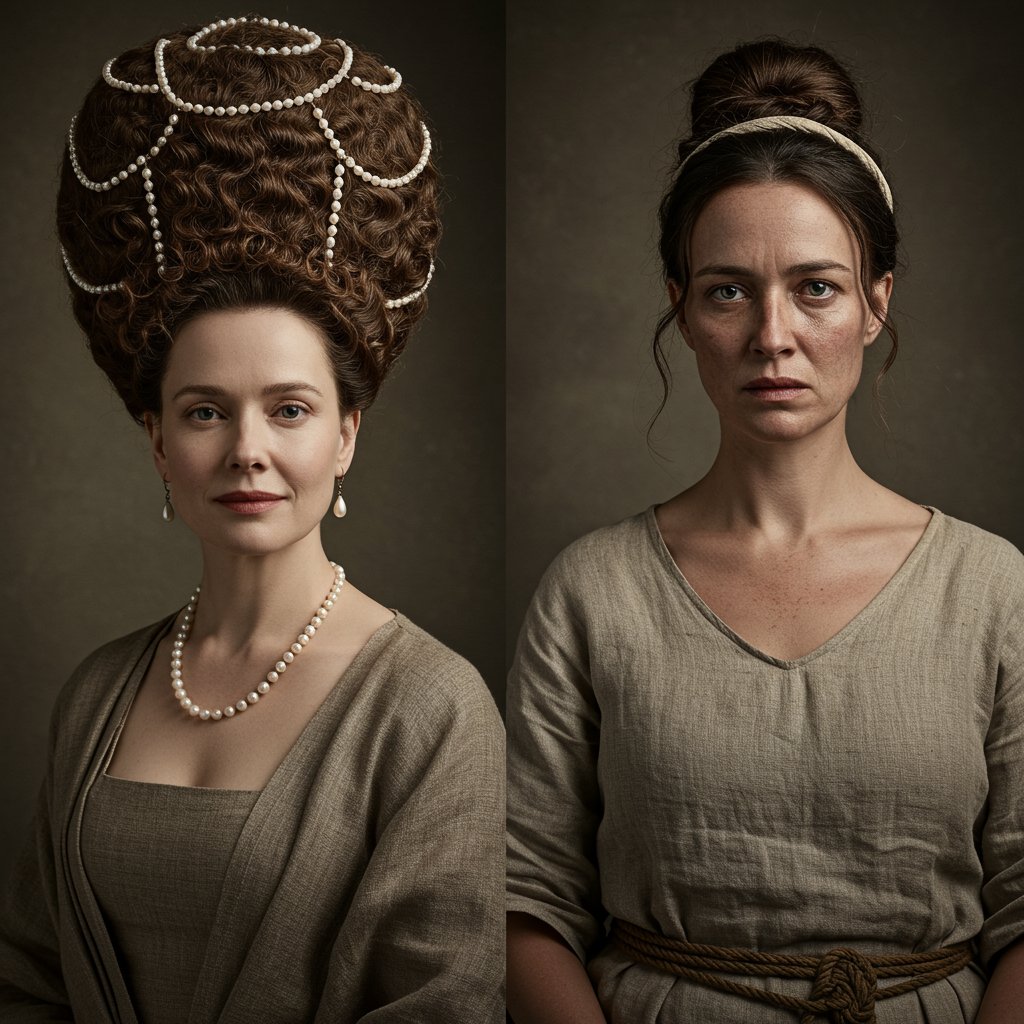
Conversely, the hairstyles of the lower classes, or plebeians, and slaves were starkly different. Practicality was paramount. A common woman might wear her hair in a simple bun at the nape of her neck or in a single braid, styles that were easy to maintain and would not interfere with work. For slaves, hair was often a marker of their subjugated status. It was typically kept short or simply covered. In some cases, a master might shave a slave's head as a form of punishment or to signify ownership. This clear visual distinction reinforced the rigid social hierarchy, ensuring that one's place in the world was immediately apparent from a single glance.
Beyond class, hairstyles also signified a woman's marital status and moral character. A respectable married woman, a matrona, was expected to wear her hair modestly but elegantly styled in an updo, often parted in the center. Unbound, flowing hair in public was associated with barbarity or, worse, promiscuity. The only exception was during times of mourning, when disheveled hair was a sign of grief. For men, hair also carried meaning. The clean-shaven, short-cropped look of the Imperial soldier became synonymous with Roman discipline and civic virtue, a stark contrast to the long, unruly hair of the 'barbarian' tribes they sought to conquer.
The Ornatrix's Canvas: Hairstyles of Roman Women
The evolution of Roman women's hairstyles reflects the changing cultural and political landscape of Rome itself, moving from Republican simplicity to Imperial extravagance.
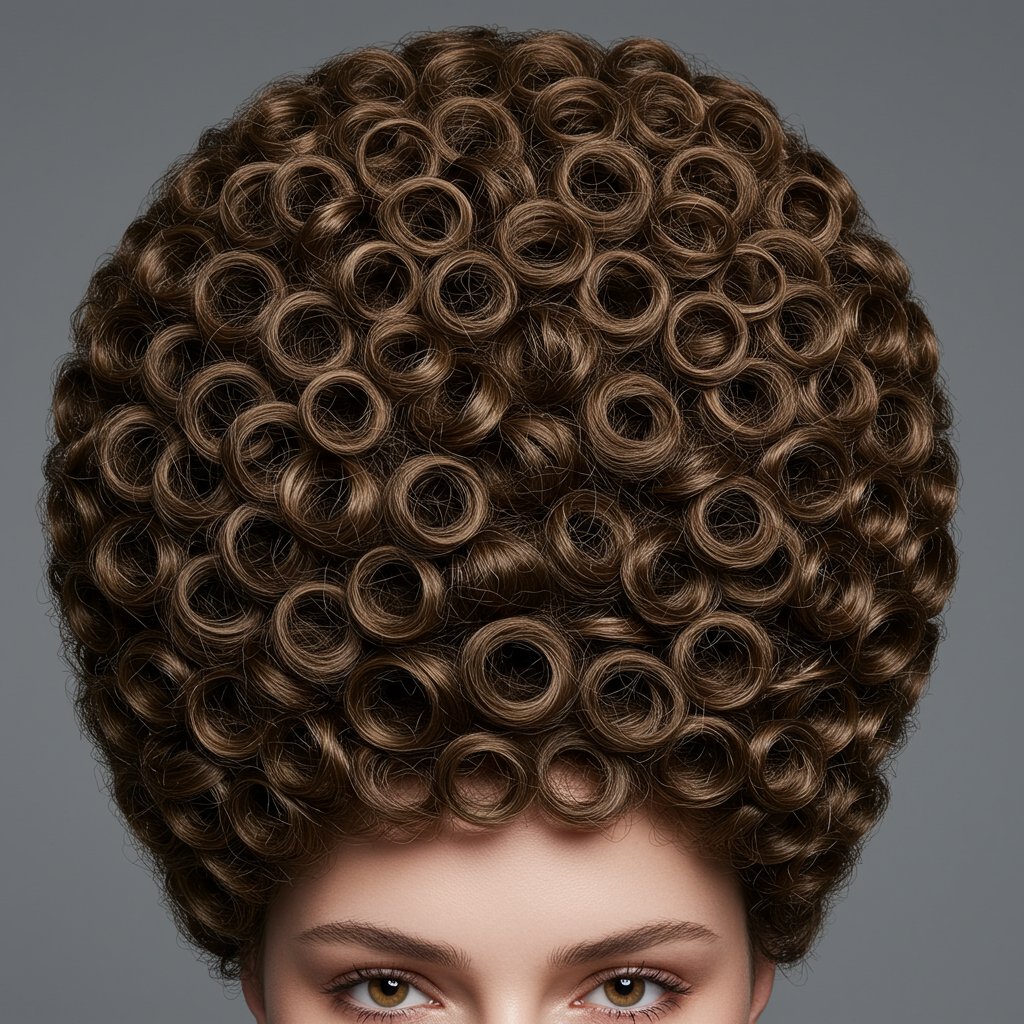
The Simplicity of the Republic: The Nodus and Early Braids
During the Roman Republic (509–27 BC), hairstyles for women mirrored the societal values of modesty, austerity, and domestic virtue. The most characteristic style of this era was the nodus, or 'knot'. Hair was parted into three sections; the side sections were braided or tied back into a bun at the nape, while the central section was looped back over itself to create a prominent knot on the forehead. This style was practical yet elegant, framing the face without excessive ornamentation. Another common style was the simple bun, known as a tutulus, which was traditionally worn by the materfamilias (head of the household) and was associated with marital fidelity and authority.The Imperial Extravaganza: Towers of Curls and Intricate Braids
With the rise of the Roman Empire came an explosion of wealth, foreign influence, and a desire for conspicuous consumption. This was nowhere more evident than in the hairstyles of the Imperial court. Empresses and aristocratic women became the trendsetters, and their elaborate coiffures were widely emulated. During the Flavian dynasty (69–96 AD), hairstyles grew to incredible heights. Women favored a high, crescent-shaped frame of curls built up over the forehead, with the rest of the hair intricately braided and coiled in the back. These styles required extensive use of hairpieces, wigs (galerus), and wire frames for support.Later, during the Antonine period, the fashion shifted towards elaborate systems of braids coiled and pinned all over the head, resembling a woven basket or a helmet. The famous portrait busts of empresses like Faustina the Elder and Julia Domna showcase these complex styles, which would have taken many hours and multiple hairdressers to achieve. Julia Domna, in particular, favored a heavy, sheet-like wig parted in the center with gentle waves covering the ears, a style that became iconic. These hairstyles were not just fashion; they were political statements, projecting an image of imperial stability, wealth, and divine grace.
From Republic to Empire: Roman Men's Hairstyles
Just as with women, the hairstyles of Roman men evolved significantly over time, reflecting shifts in military, political, and cultural ideals. In the early Republic, it was common for men to wear their hair and beards longer, a look that was later deemed unkempt and 'Greek' as Roman identity solidified. As Rome's military prowess grew, so did the emphasis on discipline and conformity. The ideal Roman man was a soldier and a citizen, and his appearance had to reflect that.

The quintessential Roman men's hairstyle of the late Republic and early Empire is often called the 'Caesar cut'. This style featured hair that was cut relatively short and combed forward over the forehead. It was practical, easy to maintain, and conveyed a sense of order and control. Figures like Julius Caesar and the Emperor Augustus popularized this look, cementing it as the hairstyle of power and authority. Being clean-shaven was also a crucial part of this image. The daily ritual of shaving was a mark of a civilized Roman, distinguishing him from the bearded 'barbarians' at the empire's frontiers.
However, fashion is never static. The reign of Emperor Hadrian in the 2nd century AD marked a significant shift. Hadrian, a great admirer of Greek culture, was the first emperor to wear a beard, supposedly to hide blemishes on his face. His influence made beards fashionable among the elite for the first time in centuries. This new trend, often paired with slightly longer, curled hair, reflected a growing appreciation for philosophy and intellectual pursuits, which were associated with the Greeks. The beard became a symbol of wisdom and sophistication, a trend that would continue with subsequent emperors like Marcus Aurelius.
The Ancient Stylist's Toolkit: Roman Hairdressing Tools and Products
Creating the elaborate hairstyles of ancient Rome required a surprising array of specialized tools and products, many of which are recognizable to modern stylists. The ornatrix presided over a beauty kit that was both functional and, for the wealthy, exquisitely crafted. The most essential tool was the calamistrum, a hollow bronze or iron tube that was heated in ashes. Strands of hair were wrapped around it to create tight, lasting curls—the ancient equivalent of a curling iron. Achieving the towering curly styles of the Flavian era would have involved heating and using multiple calamistra.
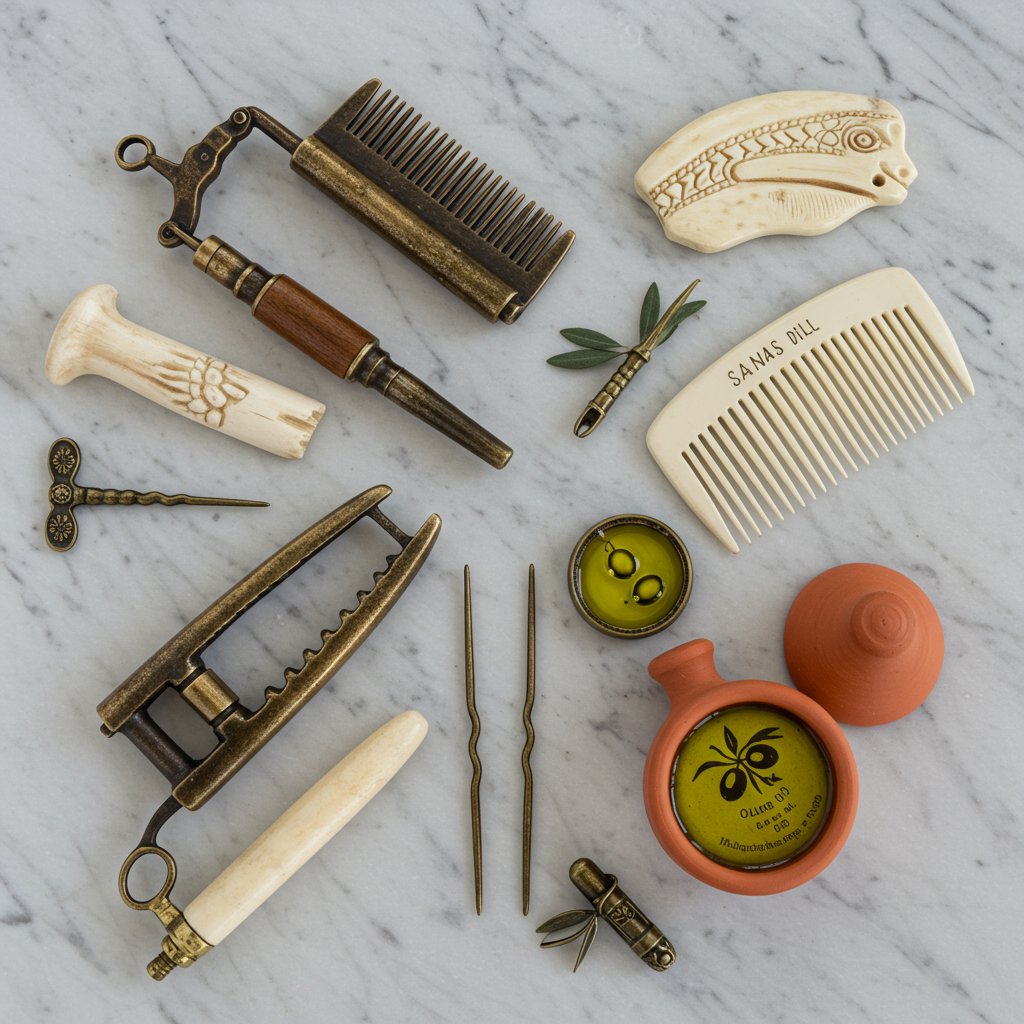
Combs, made from materials like bone, ivory, wood, or tortoiseshell, were used for detangling and styling. For the elite, these were often beautifully carved works of art. To secure the complex updos, a variety of pins (acus) were used. These could be simple bone pins for everyday use or long, ornate pins made of gold, silver, or ivory, often topped with pearls or carved figures, serving as both a fastener and a piece of jewelry. Hairnets, known as reticula, made of fine gold or silver wire, were also popular for containing elaborate braided styles.
Beyond tools, Romans used a range of products to style and treat their hair. Pomades and oils made from olive oil or animal fat were used to add shine and hold. To alter hair color, Romans employed various dyes. For darkening hair and covering grays, they used mixtures made from walnuts, leeches, or lead. To achieve the fashionable blonde and red shades associated with the Gauls and Germans, they used harsh bleaching agents containing ingredients like lye and potash, or more gentle substances like henna and saffron. For special occasions, hair was often sprinkled with gold dust to create a shimmering, divine effect.
A Spectrum of Styles: Hair Across Roman Society
While the styles of the elite dominate our historical understanding, Roman society was a diverse tapestry of different roles and classes, each with its own distinct hair customs.

The Sacred Hair of the Vestal Virgins
Perhaps the most unique and symbolic hairstyle in all of Rome belonged to the Vestal Virgins, the priestesses who tended the sacred fire of Vesta. Their hairstyle, the seni crines, was a ritualistic and ancient practice. It consisted of six braids, created by parting the hair with the tip of a spear. This style was worn from the moment they entered the priesthood as young girls until their death. The seni crines was a symbol of their purity, chastity, and sacred duty. It was so revered that it was also adopted by Roman brides on their wedding day as a symbol of their transition into a new life of fidelity and piety, connecting the bride's virtue with the sacred purity of the Vestals.The Hair of Slaves and Commoners
Life for the vast majority of people in the Roman Empire was not one of luxury and leisure. For slaves, prostitutes, and the working poor, hairstyles were dictated by necessity and social regulation. Slaves often had their hair cropped short as a practical measure and a visible sign of their servitude. An unadorned, simple style was expected. Prostitutes were often required by law to dye their hair blonde or wear blonde wigs to distinguish them from 'respectable' matrons. This created a complex dynamic where blonde hair could signify either foreign exoticism and high fashion for the elite or social marginalization for others. For the average freeborn Roman woman, a simple bun or braid was the daily reality, a far cry from the elaborate sculptures of hair seen on imperial statues.
Roman Rainbow: The Significance of Hair Color and Dyes
Hair color in ancient Rome was as much a statement as the style itself. While most Romans were naturally dark-haired, there was a strong fascination with lighter hair shades, particularly blonde and red. These colors were associated with the peoples of the northern frontiers, such as the Gauls and Germans. For Roman women, achieving these exotic colors was a way to stand out and appear fashionable. This desire led to a thriving market for wigs made from the hair of captured Germanic and Gallic people, which were highly prized and extremely expensive.
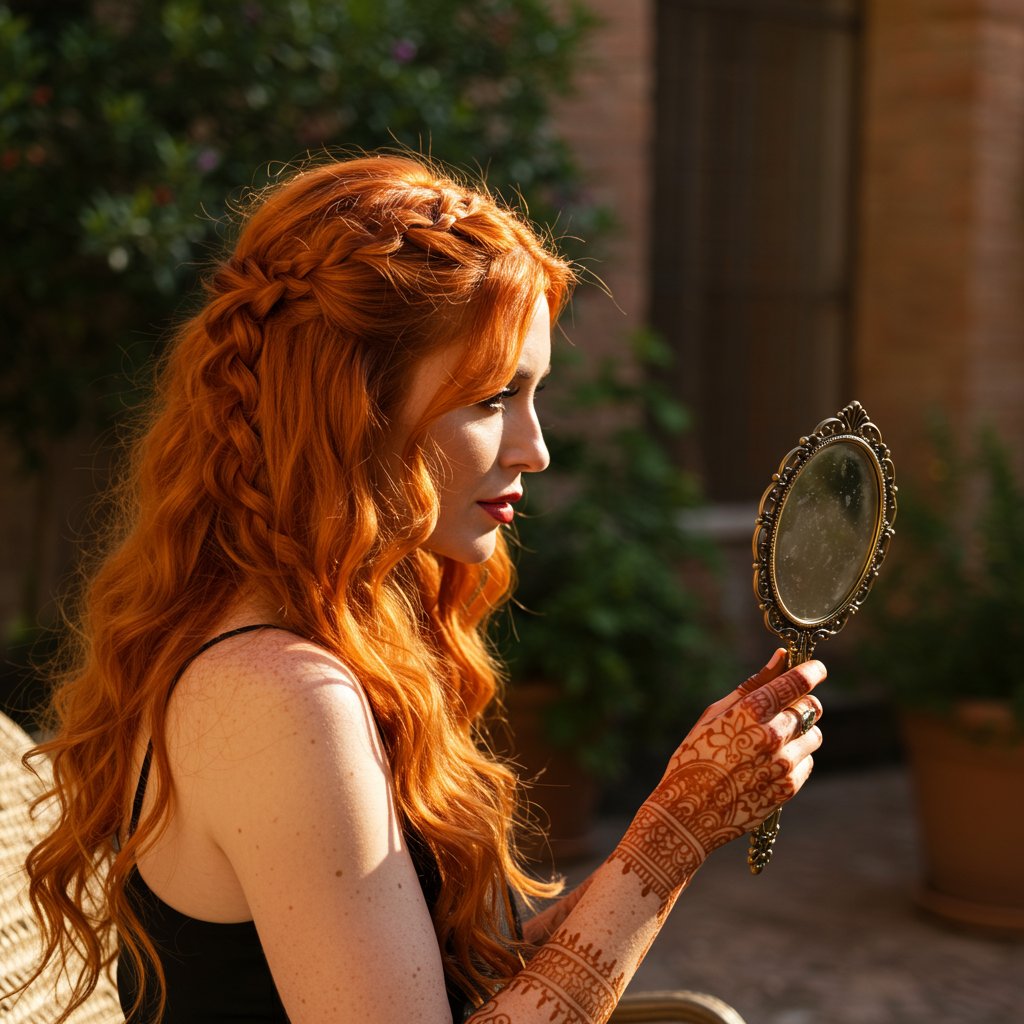
For those who could not afford imported wigs, dyeing was the alternative, though it was often a risky and damaging process. Roman texts describe various recipes for bleaching hair, many of which used caustic substances like lime, potash, or ammonia (derived from stale urine). These harsh chemicals could lead to significant hair damage and loss. More natural lightening agents included chamomile infusions and sun-bleaching. On the other end of the spectrum, red hair was achieved using henna, which was a safer and popular option. Dark dyes were also common, especially among men and women wishing to conceal gray hair and maintain a youthful appearance.
Modern Interpretations: How to Achieve a Roman-Inspired Look Today
The timeless elegance of Roman hairstyles continues to inspire modern fashion, particularly in bridal and formal hairstyling. The intricate braids, soft updos, and regal silhouettes of ancient Rome can be adapted for a contemporary look that is both sophisticated and romantic. To achieve a Roman-inspired style, focus on texture and structure. Start by creating a foundation of soft waves or curls to add volume and make the hair more pliable for braiding and pinning.
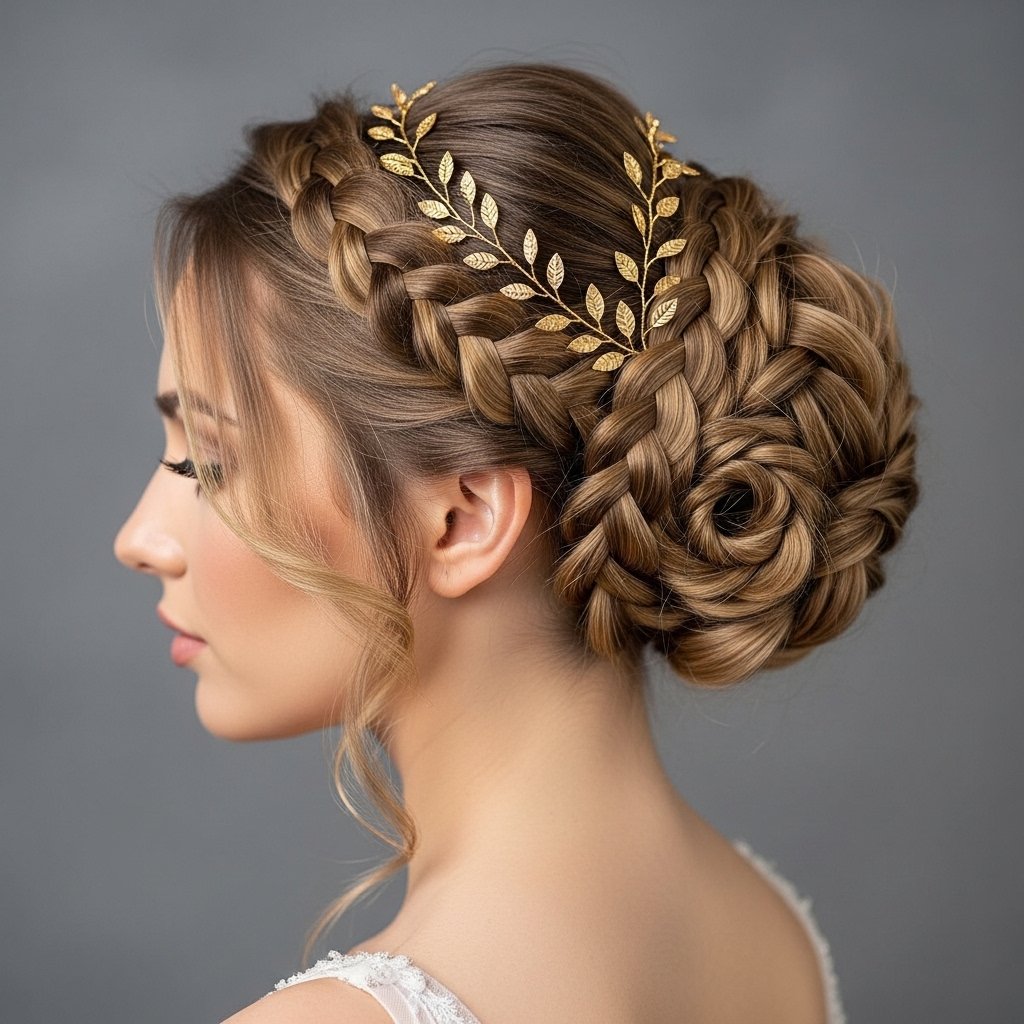
Braids are the cornerstone of many Roman looks. Experiment with different types, such as classic three-strand braids, fishtail braids, or crown braids that wrap around the head. For an authentic touch, incorporate twists and coils, securing them with discreet pins. Hair accessories are key to elevating the style. Look for delicate, nature-inspired pieces like gold-leaf hair vines, pearl-tipped pins, or even a simple ribbon woven through a braid. For a more dramatic imperial look, an experienced stylist can create a structured updo with braided coils and curled tendrils framing the face. Consulting with a professional ensures the complex architecture of the style is secure and beautifully executed.
Frequently Asked Questions About Roman Hairstyles
How long did it take to create elaborate Roman hairstyles?
An elaborate style, like those seen on Flavian-era statues, could take several hours and a team of skilled ornatrices (hairdressers) to complete. This daily ritual was a symbol of the immense wealth and leisure time of the aristocratic class.Did Roman men ever have long hair?
In the early Republic, longer hair and beards were more common. However, during the height of the Empire, short hair became the norm for Roman citizens, symbolizing discipline and civilization. Philosophers and intellectuals were an exception, sometimes wearing longer hair and beards in the Greek tradition.What were Roman wigs made from?
The most prized wigs were made from real human hair. Blonde hair from Germany and red hair from Gaul were particularly expensive and sought-after. Cheaper wigs could also be made from animal hair or other fibers for those of lower status.Was blonde hair popular in ancient Rome?
Yes, blonde hair was extremely popular and considered exotic and fashionable among the Roman elite. Because most Romans had dark hair, achieving a blonde look through expensive wigs or harsh dyes was a significant status symbol.What is the most famous Roman hairstyle?
The towering, curly updos of the Flavian dynasty and the intricate, helmet-like braided styles of the Antonine period are among the most famous and recognizable Roman hairstyles for women. For men, the short, forward-combed 'Caesar cut' is undeniably the most iconic.Did Romans use hair accessories?
Absolutely. Romans used a wide variety of hair accessories. These included simple bone or wood pins (acus) for everyday use, and ornate gold, silver, and ivory pins, often decorated with pearls or carvings, for special occasions. They also used hairnets (reticula), ribbons, and diadems.
The Enduring Legacy of Roman Hair
The intricate world of Roman hairstyles serves as a powerful reminder that hair has always been a medium for self-expression and social communication. In ancient Rome, a coiffure was a meticulously crafted statement of status, power, beauty, and identity. From the Vestal Virgin's sacred braids to the empress's architectural updo, every style told a story. The tools, techniques, and trends of the Roman world laid a foundation for centuries of hairstyling to come.
Today, the echoes of Rome can be seen on runways, in bridal magazines, and in the timeless appeal of a classic braided updo. The Roman fascination with hair as a symbol of who we are—and who we aspire to be—is a narrative that continues to unfold. By studying these ancient styles, we gain not only an appreciation for their artistry but also a deeper understanding of the enduring human desire to shape our identity from the very strands of our hair.


